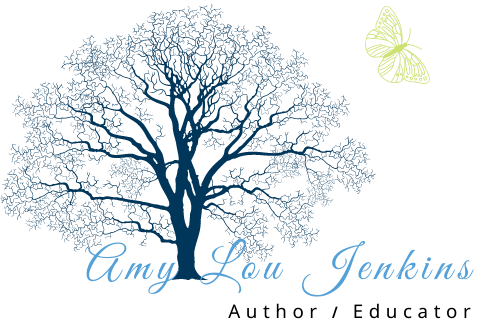
Writing Creativity Unleased with Stream-of- Conscience Writing Exercises and Objects
Writers often find inspiration in the intricacies of everyday objects. Physical objects evoke concrete experience, memories, ideas, passage of time and more. They can hold an alchemy in the creative process. Tap into this creative potential. Consider engaging in focused writing exercises with objects. If you can, retrieve the object or go to the place. Physical proximity stimulates.
Pen, Pencil or Keyboard?
Research suggests that the act of writing with a pen or pencil may engage different cognitive processes compared to typing on a keyboard. the tactile experience of physically forming letters with pen and paper has been linked to increased neural activity, potentially fostering a deeper connection between thought and expression. on the other hand, typing on a keyboard offers speed and efficiency, allowing thoughts to flow rapidly onto the digital canvas. Mix it up.
Ten Writing Exercises
These exercises are designed to free your mind and encourage a stream of consciousness, allowing thoughts to flow directly onto the page without the interference of internal critique. Set a timer for at least ten minutes and embrace the process of unfettered expression in these writing exercises with objects. Select a few or use all of them.
-
-
Grandparent's Photograph:
-
Select a photograph of a grandparent or older relative who is no longer with you. Focus on a distinctive aspect of their body or personality revealed in the photo. Set a timer for at least ten minutes and engage in a stream of consciousness writing exercise, allowing memories and emotions to surface organically.
2. The Eyelashes of the Youngest Family Member:
Observe the eyelashes of the youngest member of your family. Consider their length, shadows, and interaction with the eyes. Write freely for at least ten minutes, immersing yourself in the details and allowing your imagination to guide the narrative. Move back and forward in time. Jump from these eyelashes to another. Have your pen follow wherever your mind jumps even if it feels you are getting off track. Remember, no rules.
3. The Kitchen or Dining Room Table:
Recall a physical kitchen or dining room table from a place where you attended gatherings. Describe the table and delve into the emotions and memories associated with this space. Set a timer for at least ten minutes, letting the details of the table lead you to reflections on shared meals and the passage of time.
4. Life of a Piece of Jewelry:
Consider a piece of jewelry you own that once belonged to someone else. Reflect on its history and the events it might have witnessed. Engage in a stream of consciousness writing exercise for at least ten minutes, weaving a narrative around this object with a familial or unknown past. Remember it’s okay to suppose, to imagine, or to to shift to or away from fiction.
5. Childhood Toy or Keepsake:
Select a childhood toy or keepsake that holds sentimental value. Describe it in detail and explore the memories it evokes. Write freely for ten minutes or more, allowing your words to flow without self-censorship.
6. Forgotten Corner of Your Home:
Identify a neglected or forgotten corner of your home. Describe the space, its contents, and the emotions it elicits. Set a timer and engage in a stream of consciousness writing exercise, uncovering hidden stories within the overlooked nook. You might have a drawer that is so full you can’t use it or a section of the closet with clothes from what feels like a past life. Perhaps you haven’t looked in the attic over the garage for years. What’s behind your nightstand? Why do you keep the broken holiday ornaments? What are the objects and spaces you haven’t death with for a while. They likely hold meaning worth considering.
7. Weathered Book or Photo Album:
Pick up a weathered book or a photo album with visible signs of use. Explore the tactile sensations and memories associated with these aging items. Write continuously for at least ten minutes, capturing the essence of time imprinted on the pages in these Writing Exercises with Objects.
8. A Single Flower or Plant:
Select a single flower or plant within your vicinity. Observe its features and consider the symbolism it holds. Set a timer and engage in stream of consciousness writing, allowing your thoughts to bloom alongside the botanical subject in these Writing Exercises with Objects.
9. Front Door of Your Home:
Stand at the front door of your home and take in the details—the color, texture, and any decorations. Write for at least ten minutes, exploring the significance of this threshold and the stories it guards in these Writing Exercises with Objects.
10. Your Reflection in a Mirror:
Look into a mirror and observe your reflection. Consider the emotions and thoughts that surface as you gaze at yourself. Engage in a stream of consciousness writing exercise, allowing the words to flow freely for at least ten minutes in these Writing Exercises with Objects.
From Writing Exercises with Objects to a Manuscript
Experimenting with these writing exercises can uncover hidden facets of your creativity, providing a gateway to unexplored narratives and emotions. Try several or tackle them all to embrace the diverse perspectives offered by the everyday objects that surround you in these Writing Exercises with Objects. Set aside self-judgment, let your thoughts spill onto the page, and allow the magic of the writing process to unfold.
Discover more writing exercises specifically crafted to guide you to find the story of your memoir. Free download.



